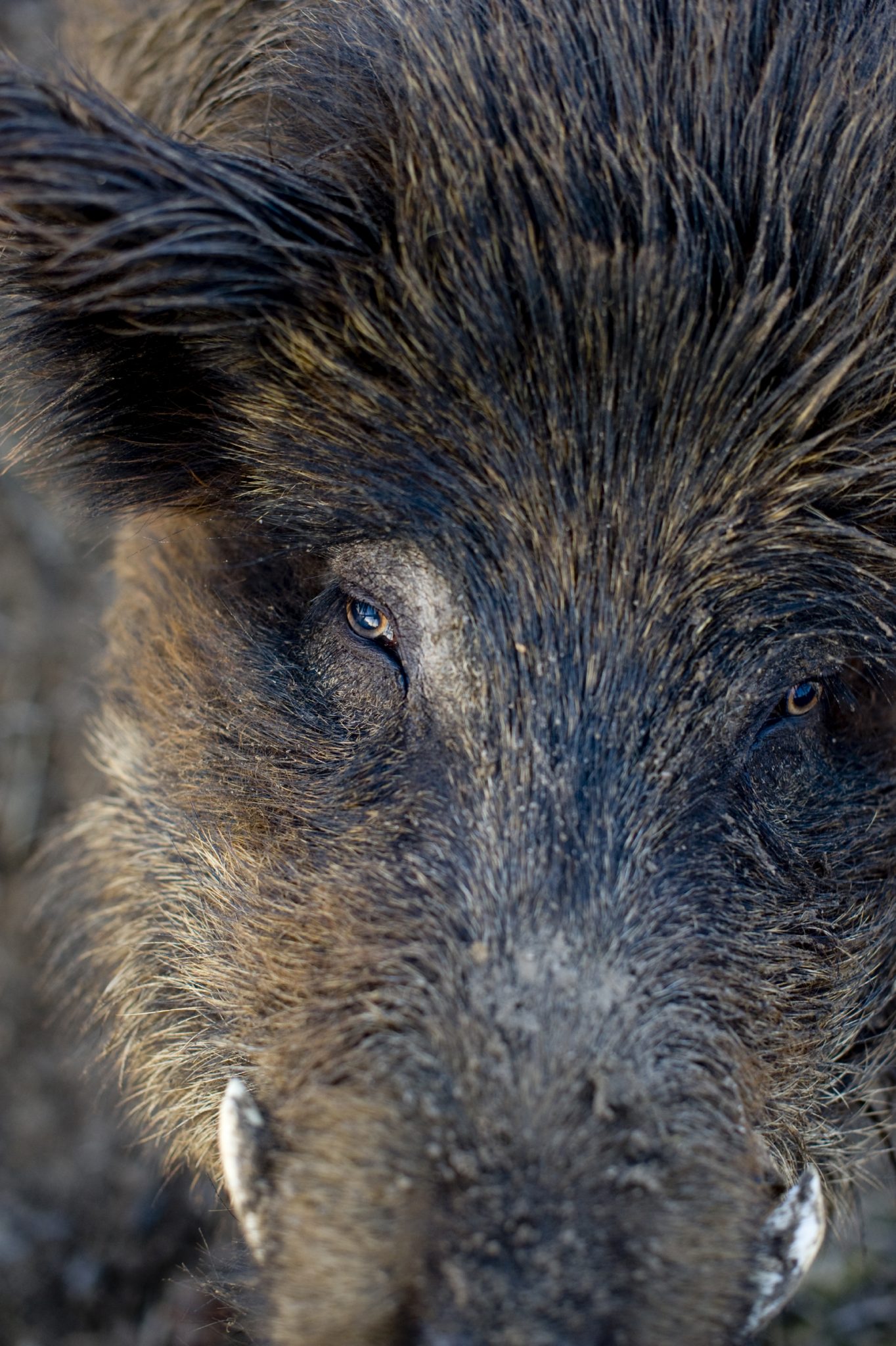Forestry & Wildlife

Wild pigs are not native to the Americas. They were first introduced to the United States in the 1500s by the Spanish explorer Hernando DeSoto, who traveled extensively throughout the Southeast.
Because pigs are highly adaptable and capable of fending for themselves, they were a popular livestock species for early explorers and settlers. In the centuries following European exploration and colonization of the eastern United States, settlers, farmers, and some Native Americans continued to promote the spread of pigs by using free-range livestock management practices. In the early 1900s, Eurasian or Russian wild boar were introduced into portions of the United States for hunting purposes. As a result of cross-breeding with wild domestic stock, many hybrid populations now exist throughout the wild pig’s range.
Range Expansion
Today, wild pigs are both numerous and widespread throughout much of the United States, with established populations in at least 36 states and an additional 12 states reporting a presence of wild pigs. Historically, problems with wild pigs were limited mostly to the southeastern states, California, Hawaii, and Texas. However, in the last 20 years, wild pig ranges have expanded dramatically to include much of the United States, and populations now exist in such northerly climates as Michigan, North Dakota, and the provinces of Manitoba and Saskatchewan in Canada. This current distribution of wild pigs, almost nationwide in scope, is not a consequence of natural events. Instead, it has resulted largely from translocation of wild pigs by humans and from “the nature of the beast.”
The Human Factor
The popularity of wild pigs as a game species has played a major role in the expansion of their range throughout the United States. In some cases, the sudden presence of wild pigs in an area where they previously did not exist can be attributed to escapes of stocked animals from privately owned, “game-proof” fenced hunting preserves. In other cases, the sudden presence of wild pigs is a result of illegal translocation: the practice of capturing wild pigs, transporting them to new locations, and releasing them into the wild.
One group that continues to fuel this practice consists of irresponsible and uninformed pig- hunting enthusiasts whose goal is to establish local wild pig populations for recreational hunting. A second group comprises those whose goal is to profit from the capture and sale of wild pigs to hunting enthusiasts. Wild pigs are quick to learn, and those that have been previously captured, transported to a new location, and released often are a daunting challenge to recapture. As a result, these actions contribute to the spread of this nonnative, highly invasive species.
The Nature of The Beast: Biological and Behavioral Traits
Pigs possess many biological and behavioral traits that enable them to live just about anywhere and quickly populate new areas.
- Wild pigs are habitat generalists, meaning that they are highly adaptable and can live in many different habitat types throughout a landscape or region. They can tolerate a wide range of climates, ranging from the hot, dry deserts of Mexico to the subzero temperatures of the extreme northern United States and Canada.
- Wild pigs are opportunistic omnivores. They eat mostly plant matter and invertebrate animals such as worms, insects, and insect larvae. When the opportunity presents itself, wild pigs will eat small mammals, the young of larger mammals, and the eggs and young of ground-nesting birds and reptiles.
Bill Hamrick, Extension Associate III, Department of Wildlife, Fisheries, and Aquaculture, Mississippi State University; Mark Smith, Associate Professor/Extension Specialist, Alabama Cooperative Extension System, School of Forestry and Wildlife Sciences, Auburn University; Chris Jaworowski, Wildlife Biologist, Alabama Department of Conservation and Natural Resources, Division of Wildlife and Freshwater Fisheries—Wildlife Section; and Bronson Strickland Associate Professor/Extension Specialist, Department of Wildlife, Fisheries, and Aquaculture, Mississippi State University.
New May 2016, A Landowner’s Guide for Wild Pig Management: Practical Methods for Wild Pig Control, ANR-1397

